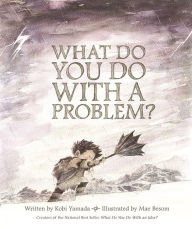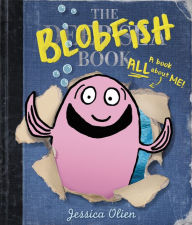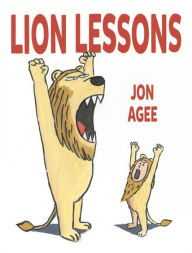Finally....today's the day. Each year, on August 10th, picture book lovers from near and far join together to share favorite picture books. Classroom teachers, librarians, parents, authors, and other book lovers join the
#pb10for10 community to share their favorite titles.
Stop by the community to share your favorites and to discover new titles you won't be able to resist. Enter at your own risk!
My Past 10 Collections
My 2016 #pb10for10: Stories for My Son (The Student Teacher)
Determining my focus for this year's picture book celebration wasn't hard. You see, this year our son will be completing his education program. We're pretty excited for him. He is an early education major and will be doing his student teaching in the coming school year. These next months will teach him much. My #pb10for10 collection this year has him in mind. I'm sharing ten books his young readers will love, but titles that will also help him to remember some important things about growing a community of learners. In no particular order....
"Love them for who they are."
Some kids like to do new things, want to talk, and enjoy being the center of everything. Other kids like the quiet, prefer working by themselves and aren't as eager to volunteer. Get to know your students and their preferences...and respect them for who they are. Help them to feel safe in your learning community.
I Love You Already by
Jory John and
Benji Davies (2016): Bear is all settled in for a quiet day. Duck has a different idea. Duck comes over to Bear's house to get him to come out and do something. What happens when two friends want to do completely different things? Readers will fall in love with these characters who help us to understand you can be different, but still be friends.
"Let them move."
Kids need to move. Books are one way to give them opportunities to let them move around.
Is Everyone Ready for Fun? by
Jan Thomas (2011). This book has never let me down. Kids love to join the cows as they dance and move on chicken's sofa. The repetitive pattern in the text, bright illustrations, and fun characters make this a book that is loved by all.
"Make them laugh."
 Kids love to laugh. Yes, books with titles like this one will surely get a laugh. There will be so many opportunities to laugh with your students. Enjoy them.
Kids love to laugh. Yes, books with titles like this one will surely get a laugh. There will be so many opportunities to laugh with your students. Enjoy them.
Whose Butt? by
Stan Tekiela (2012). Yes, I'm sliding in an informational text, but how could I resist? There's nothing like laughing with students, and kids won't be able to resist a laugh with this one. The author shows photographs of the back end of animals and readers have to try to guess the animal. He includes interesting facts that will surely get kids asking questions.
 "Every problem is an opportunity."
We can see problems as problems or we can view them as opportunities.
"Every problem is an opportunity."
We can see problems as problems or we can view them as opportunities.
What Do You do with a Problem written by Kobi Yamada and illustrated by Mae Besom (2016): In this story, the boy is given a problem. He didn't want a problem, but he had one anyway. He tried to get rid of it with no luck. What could he do? We can learn a lot from this character as he works his way through this challenge and finds a way to begin to fix it. The illustrator starts the story with little color as the problem takes over. Illustrations are brown (or maybe dark gray) and white. As he begins to work through it, the illustrator begins to add color and the situation brightens.
"Mix it up."
 While routine and structure can make it easy for students to work and learn, there are times to mix it up. When the pace of the work seems too slow or the enthusiasm wanes, mix it up.
The Blobfish Book
While routine and structure can make it easy for students to work and learn, there are times to mix it up. When the pace of the work seems too slow or the enthusiasm wanes, mix it up.
The Blobfish Book by
Jessica Olien (2016): This book is so much fun. This book is supposed to be an informational book about the ocean, but Blobfish is sure he should be a part of it. He walks across pages campaigning to be a part of the story. The author has used ocean photographs that cover the page from top to bottom which often include ocean information. A caricature of Blobfish is imposed on each page. Through speech bubbles, Blobfish interrupts the story to tell his part.
"Help your students find their stories."
Young writers often don't know the power of their stories. Though a lot happens in their daily lives, they don't often realize the significance.
My Dog Spot by Jack E. Levin and Norma R. Levin (2016): In this story, the authors write about their dog, Spot. Each double page spread tells us about Spot's looks, life, and activities. This book, with its simplistic structure and illustrations, makes a great mentor text for young writers.
"Learn to walk beside your students."
Help students to see all that is possible by modeling. Showing students how will help them to take next steps.
Lion Lessons by
Jon Agee (2016): When this student tries to earn his lion diploma, things don't go quite as planned. Being a lion isn't easy work. His teacher patiently models lion technique and shows him how to do all the things a lion should do.
"Get to know your students and their families."
Learning is a partnership between us, students, and their families. The more we take the time to communicate with families and get to know them, the easier it is to meet the needs of our learners.
Hello, My Name is Octicorn by Kevin Diller and Justin Lowe (2016): Octicorn isn't your ordinary octopus. His mom is an octopus and his dad is a unicorn. Octicorn tells readers about his life and his family. He also shares how hard it can be to fit in when you are an octicorn. This book could help support conversations about differences, fitting in, acceptance, and family diversity.
"Be ready for surprises."
 Sometimes you'll be unsure of next steps, but if you listen carefully the kids will tell where you to go. They'll throw out the perfect gem at just right the moment.
Sometimes you'll be unsure of next steps, but if you listen carefully the kids will tell where you to go. They'll throw out the perfect gem at just right the moment.
It Came in the Mail by
Ben Clanton (2016):
Liam loved to get mail. The problem was, he wasn't getting any. Though he patiently waited and waited no mail came. Liam decided he'd have to write a letter if he wanted to get something in the mail.
"Teach like an explorer."
Remember that every day is an adventure. Learn from those around you, both students and other educators. Climb the biggest hills, dig deep into the dirt, discover new paths, and take a few risks. As Atkinson reminds us in this book, "Explorers are prepared for everything."
Explorers of the Wild by
Cale Atkinson (2016): This picture book, from the author of
To the Sea, is one of my favorite new finds. In this book, a young boy goes out to explore. He's pretty excited about his upcoming journey into the woods, but he knows there can be danger in the wild. When he runs into a bear he is, at first, a little frightened, but Bear is an explorer too. Together exploring is even better.
This story inspires curiosity, exploration, and could help begin the discussion about being willing to try new things and take risks. While the story is well worth a read, the illustrations add to the adventure. These full page illustrations and double page spread help to tell the story of two explorers. The brightness of the illustrations and detail of each page make this a book children will love to hear.
SaveSave
SaveSave












